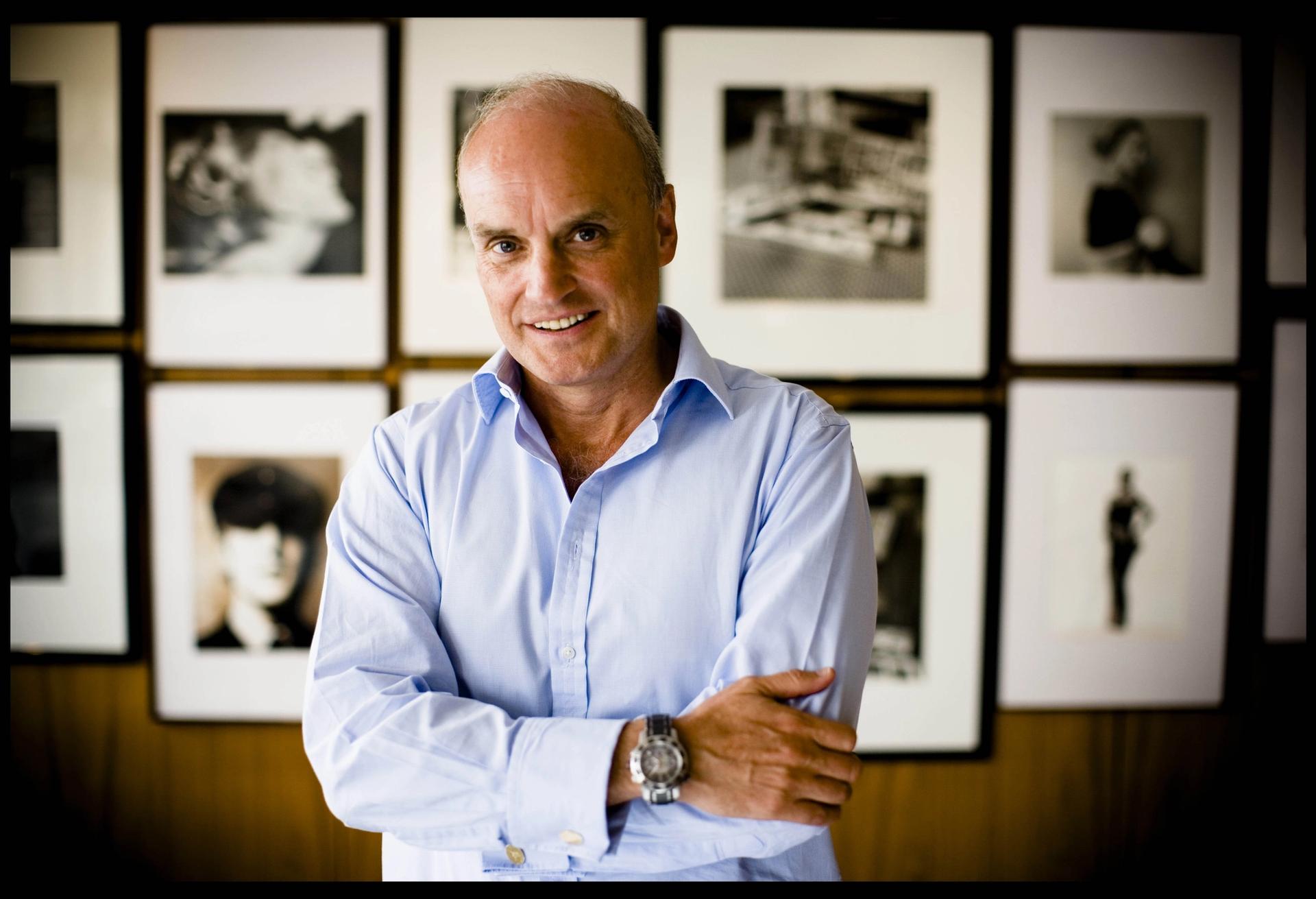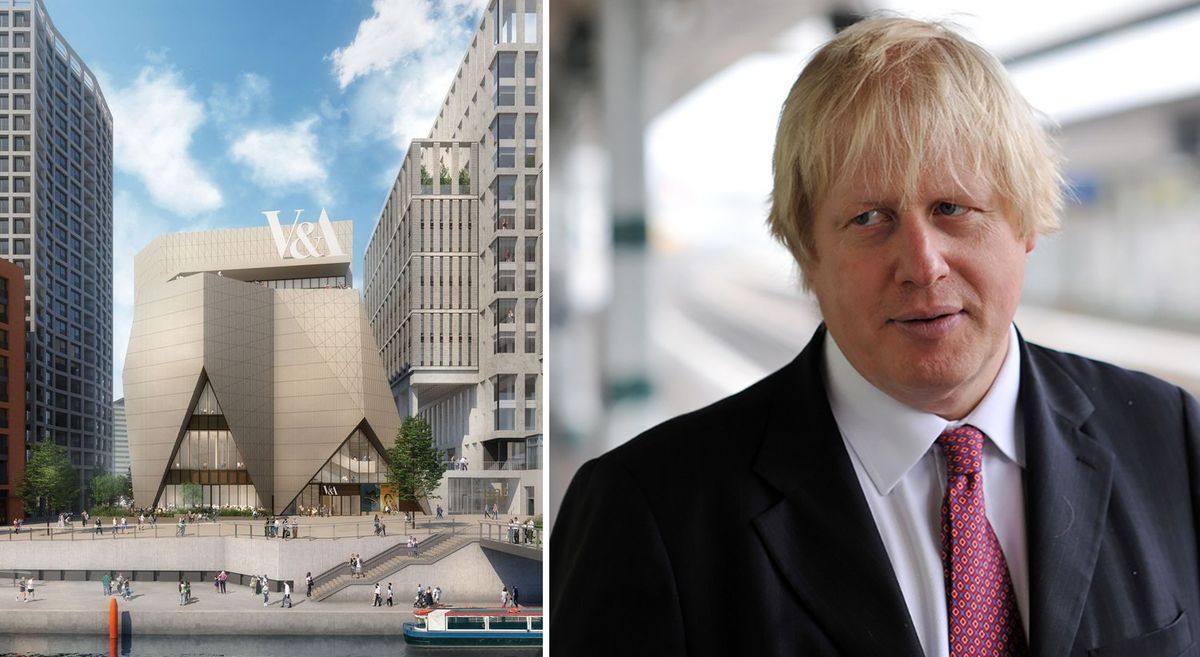Nicholas Coleridge, the chairman of the Victoria and Albert Museum (V&A), has given a highly revealing account of his encounters with Boris Johnson over the V&A East project on the former London Olympic site. Coleridge’s book, The Glossy Years, is published today. He is also the chairman of Condé Nast Britain.
It may come as a surprise that the V&A East was not the museum’s idea, but that of Johnson, London’s mayor until 2016: “It was a Boris Johnson brainwave... Boris already had a catchy name for his vision—Olympicopolis—and he wanted the V&A to be part of it. So did George Osborne [then Chancellor of the Exchequer]... Boris approached Martin Roth [then V&A director], who liked the idea.... We could not possibly have predicted the months and years of planning, plotting, anguish and elation that lay ahead.”
Johnson later summoned Coleridge to City Hall for a briefing: “He held strong opinions on what the new V&A should look like, and wanted to make sure I was fully on side. His vision was a million miles from the brief already issued by his team to the architects, and he was in classic, barnstorming, Boris mode.”
In true “Boris mode”, the mayor proceeded to lecture the V&A Chairman: “We don’t want some stunted, Eastern Bloc, Communist state, post-Corbusian monstrosity. What we want is a cross between the British Museum and the V&A in South Kensington, something magnificent rising above the Olympic Park. We want Corinthian columns. We want Ionic pillars. We want the Babylonian Palace of Tiglath-Pileser! That’s what we’re after, Nick. That’s the vision. I hope you’re with me on this.” Coleridge had little opportunity to question the mayor’s vision.
Coleridge recalled the uneasy situation: “Sitting behind Johnson were representatives from the London Legacy Development Corporation, which was responsible for the site. They looked increasingly anxious, and began muttering about budgets and the ‘public realm’. They communicated with the Mayor as though he was the slightly wilful eight-year-old child of a maharaja, who needed humouring. There was much appeasing laughter.”
Johnson then responded: “Budgets, budgets... we’re all in favour of budgets. If we need more money, we’ll find it. Remind me to call Michael Bloomberg [former New York mayor] and Lakshmi Mittal [Indian-born UK-based businessman]”.

Nicholas Coleridge has revealed his conversations with Boris Johnson around the V&A East in his new book Photo: Felix Clay
The London mayor then immediately decided to telephone Mittal, who answered the call on his mobile in Ibiza. Johnson jokingly began: “Yikes, Lakshmi, are you in a disco, you old swinger? Now, look here, Lakshmi, I’m going to need your help...” It is not yet clear whether Mittal will help fund V&A East, but he had already put up £16m for the ArcelorMittal Orbit sculpted tower designed by Anish Kapoor, which opened for the 2012 Olympics.
The V&A has always been unwilling to discuss the cost of the east London project, but Coleridge reveals an interesting figure. A few years ago the V&A was already involved with V&A Dundee and a venue at Shekou in China. Coleridge comments in his book: “If you added the cost of all these projects they exceeded £300 million. It was mildly alarming”. The capital cost of V&A Dundee was £80m, a sum raised locally, as was the project in China, costing an undisclosed sum. This suggests that even a few years ago V&A East had been costed at a very considerable sum, possibly approaching £200m.
In 2016 Sadiq Khan was elected a Labour mayor for London, with Johnson becoming the foreign secretary and, since July this year, prime minister. According to Coleridge, Khan “took a while to embrace the Olympic Park cultural project, partly on the grounds that it was Boris’s big idea”.
Coleridge recalls: “We spent months conniving with Sadiq’s Deputy Mayor for Culture, Justine Simons, to keep the project alive. Three times it came within a whisker of collapse, and three times it rose again from the dead. Everything that could possibly go wrong, went wrong: funding crises, aesthetic crises, political crises over provision for affordable housing. But eventually, miraculously, it all fell into place.”
As Coleridge reports: “The V&A’s architects, O’Donnell + Tuomey, came up with a new, innovative museum design [for the Stratford Waterfront building] ostensibly inspired by a Balenciaga couture dress in the V&A fashion collection, but reminding me of Darth Vader’s helmet. There wasn’t a trace of a Corinthian column or Babylonian frieze in the whole scheme, but it has impact.”
V&A East, as it has evolved, will now comprise two buildings: the main museum on the Stratford Waterfront and a publicly accessible storage facility ten minutes walk away. The current museum director, Tristram Hunt, hopes to open both in 2023.
Nicholas Coleridge, The Glossy Years: Magazines, Museums and Selective Memoirs, published by Fig Tree, £25


